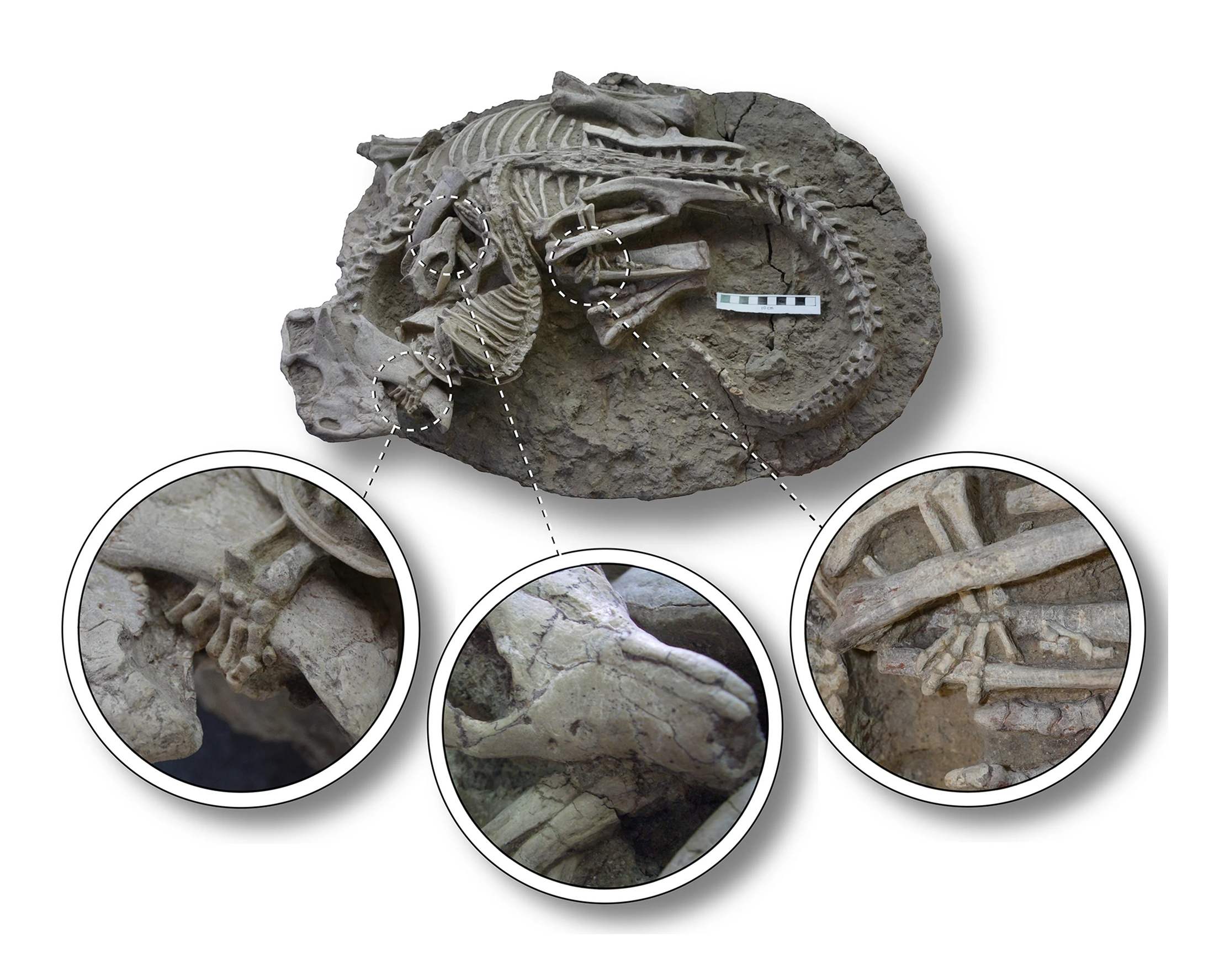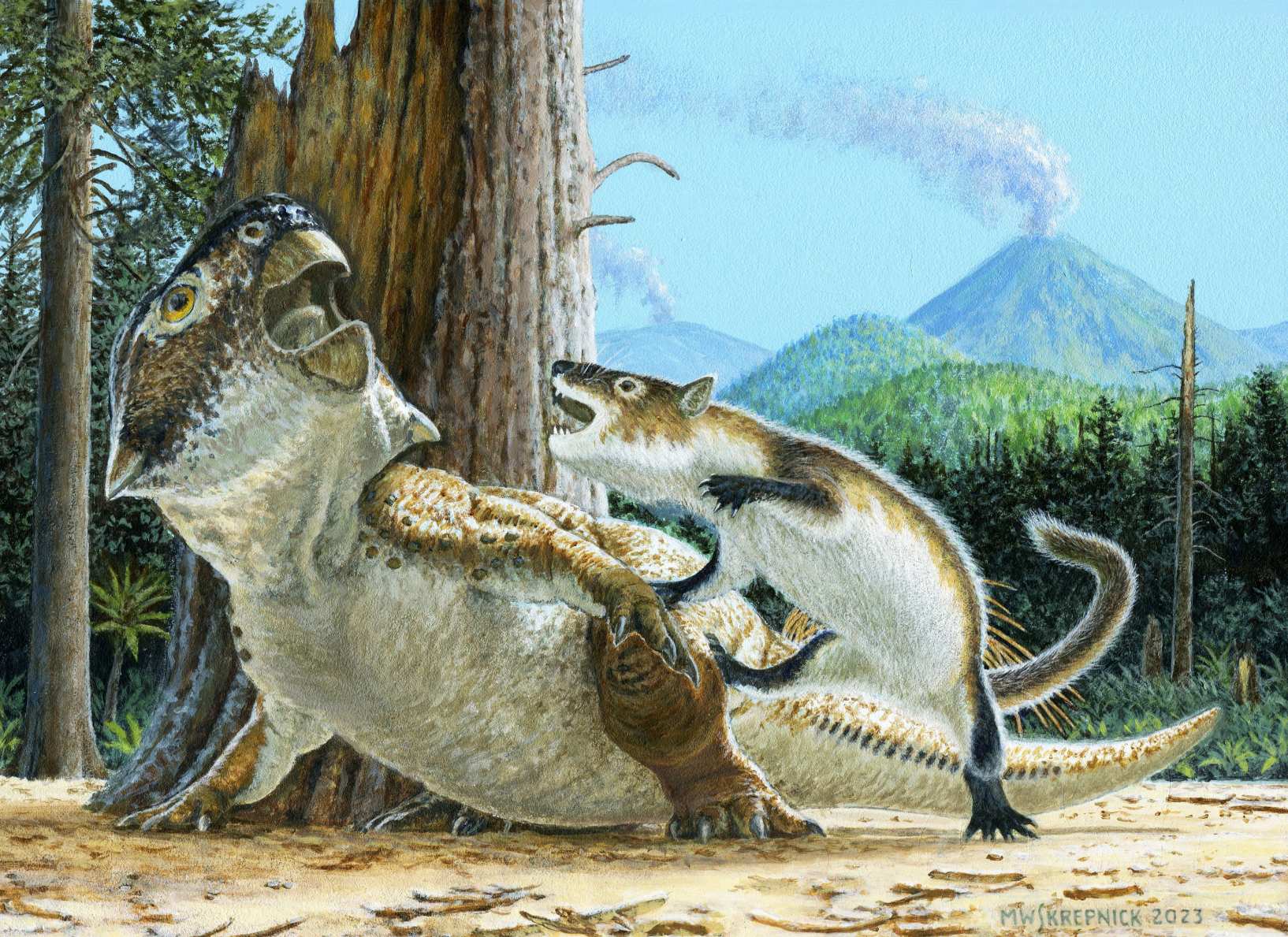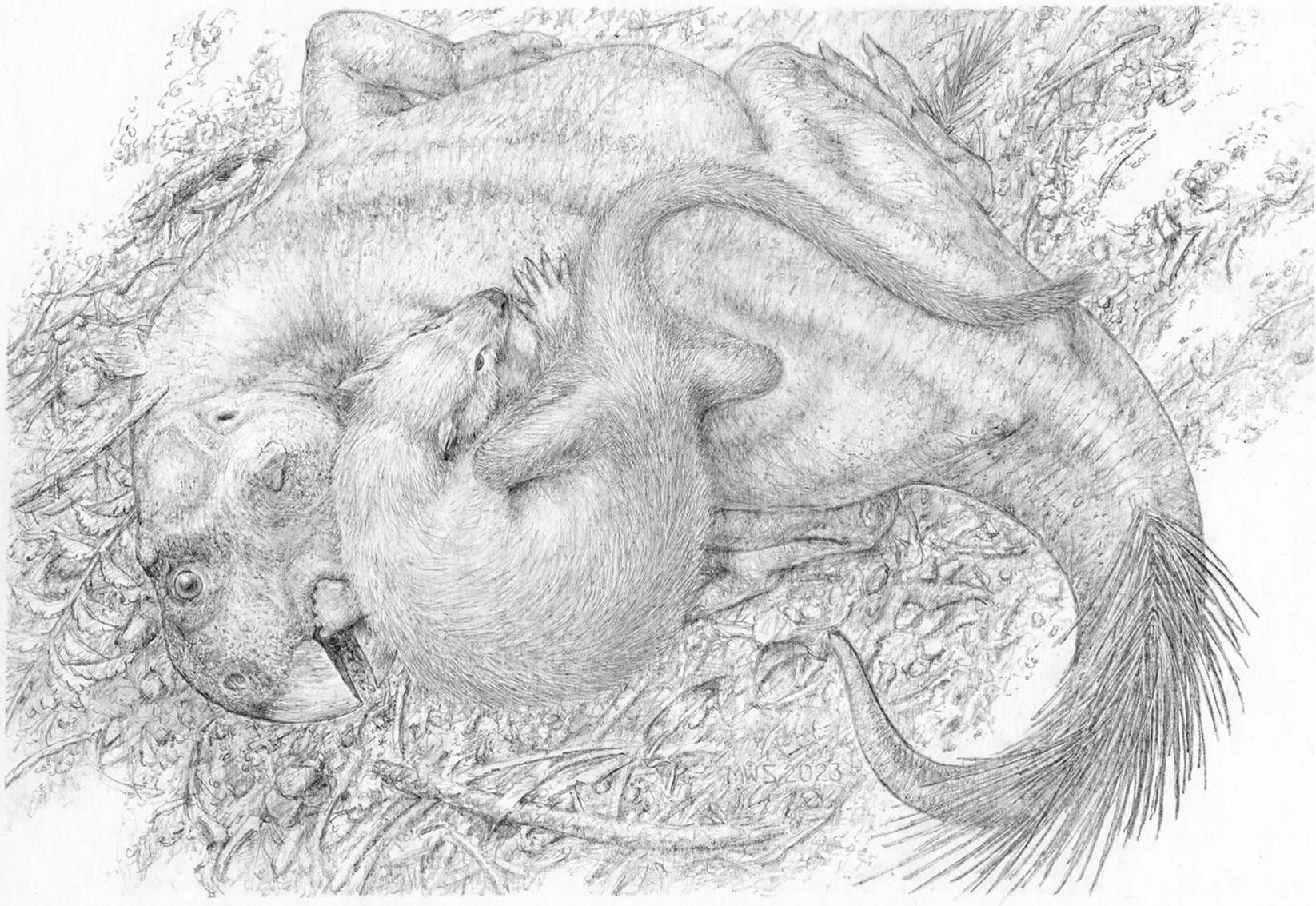Scientists from both Canada and China recently uncovered a fossil that dates back to around 125 million years ago and portrays an intense moment in time when a mammal of a carnivorous nature assaulted a much larger herbivorous dinosaur.

Dr. Jordan Mallon, a palaeobiologist from the Canadian Museum of Nature and a collaborator on the investigation, has stated that the two creatures are engaged in a fierce battle, intertwined tightly, and this is one of the early cases of predatory behavior from a mammal on a dinosaur.
The discovery of this well-preserved fossil casts doubt on the notion that dinosaurs had few predators among their mammal contemporaries during the Cretaceous period when they were the top animals. The rare fossil is now kept in the Weihai Ziguang Shi Yan School Museum in Shandong Province, China.
The fossil in question is identified as a species of Psittacosaurus, which is roughly the size of a large canine. These plant-eaters were the first horned dinosaurs to be discovered and lived in Asia during the Early Cretaceous period, from 125 to 105 million years ago.
Accompanying the dinosaur is a badger-like creature known as Repenomamus robustus. While not large by dinosaur standards, it was the biggest mammal alive in the Cretaceous, when mammals had not yet come to rule the planet.
Before this discovery, paleontologists were aware that Repenomamus hunted dinosaurs like Psittacosaurus due to the presence of fossilized juvenile bones of the plant-eating animal in the mammal’s digestive system.

Mallon states that the presence of these two creatures together is nothing new, however, the remarkable fossil displays a predatory behavior that is new to science.
The specimen was obtained from Liaoning Province, China in 2012 and the two skeletons are nearly complete. This is due to the fact that the Liujitun fossil beds, known as “China’s Dinosaur Pompeii”, are the source of the fossils.
The area is named for the abundance of fossils of dinosaurs, small mammals, lizards, and amphibians found there. It is believed these creatures were buried in a rush of mud and debris due to a volcanic eruption or multiple eruptions. Dr. Aaron Lussier from the Canadian Museum of Nature conducted an analysis of the fossilized material to determine the presence of volcanic components.
The Psittacosaurus-Repenomamus fossil was in the care of study co-author Dr. Gang Han in China, who brought it to the attention of Canadian Museum of Nature palaeobiologist Xiao-Chun Wu. Dr. Wu has worked with researchers in China for decades and knew it was special when he saw it.
Upon a thorough assessment, the Psittacosaurus is observed to be lying flat with its hindlimbs tucked to either side. The body of the Repenomamus is seen to be looping around to the right side and resting on the dinosaur, with the mammal clasping its jaw. Additionally, the mammal appears to be biting into some of the ribs and the back foot is gripping the hind leg. According to Dr. Mallon, “The facts point to an ongoing assault.”
Mallon, Wu, and their team of researchers considered and eliminated the idea that the mammal was scavenging a deceased dinosaur. Their evidence was that the bones of the dinosaur had no tooth marks, indicating that it had been attacked, and not scavenged.
Additionally, it was unlikely the two creatures would have become so intertwined if the dinosaur had already been dead when the mammal found it. The fact that the Repenomamus was atop the Psittacosaurus implies that it was the aggressor.
Mallon and Wu have observed that wolverines, which are relatively small animals, have been known to hunt and take down much bigger game such as caribou and domestic sheep. Additionally, in the African plains, wild dogs, jackals, and hyenas will often attack preys that are still alive, causing the victim to collapse in a state of shock.

Mallon suggests that the fossil might display the Repenomamus having preyed on the Psittacosaurus, while it was still alive, only for both of them to be killed in the tumultuous aftermath.
The researchers in their paper theorize that the volcanic materials from the fossils in Lujiatun, China will provide further knowledge about the relationship between species that is otherwise not available from other fossil data.
An article about the research was published in the journal Scientific Reports.




